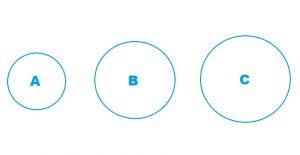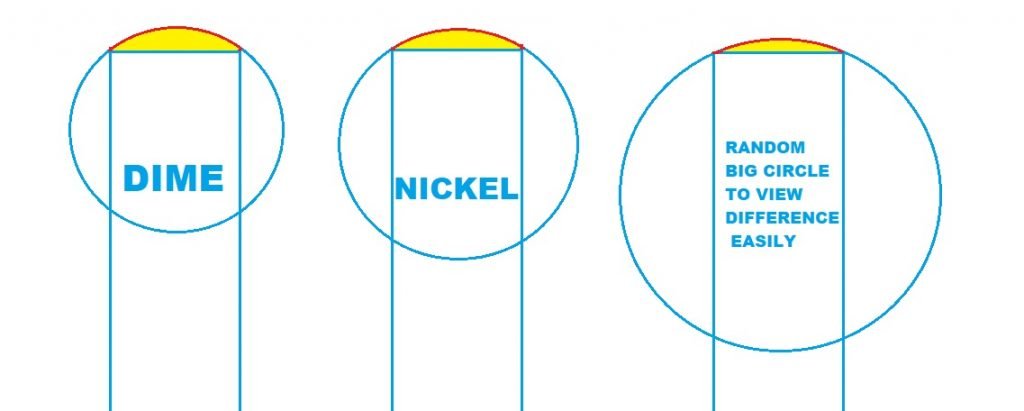Cue Tip Shape Dime Or Nickel
This article is more than 2 years old
This topic whether a cue tip shape be dime or nickel can confuse anyone. The topic requires analysis at minute details and can be difficult to understand for the beginners. You must have heard at the pool club that a certain player plays with a dime shape. What is this discussion of cue tips related to coin sizes all about? To get into detail I would very briefly explain the concept of circle curvature.
What is Circle Curvature?
In simple words, the curvature is how quickly a circle is rounding itself. To give an example, consider these three below circles A B and C.
A has lesser circumference than B and C, this means that A is rounding quicker than the other three circles. So A has more curvature than B. B has more curvature than C. The significance is that if you cut an equal length of the circumference on all three circles then the one on the A will be curvier than the others. The small circle is the curvier it is.

DIME AND NICKEL CURVATURE
Now relate the above example with the dime and nickel curvature. A dime has a circumference of 17.91 mm while Nickel has a circumference of 21.21mm. There is a difference of 3.3mm between both of them. So a dime has more curvature than a nickel.
For the sake of illustration, I will draw the three circles again. On the left you will see dime, in the middle nickel and towards the right an exaggerated big circle to explain easily the point I am trying to make.

I want you to focus on the red line in the yellow region. The line in the dime is curvier than of nickel and the right circle. The diameter of the cue shaft is kept the same to show the fact that if the diameter is kept the same than the dime cue tip would be more rounder. The cue tip on nickel is relatively flatter and the big circle on the right has a tip that is very flat.
Dime Vs Nickel Cue Tip
The difference of 3mm between dime and nickel is less significant because the 3mm is spread throughout the circumference. If 1/6 of the circumference is considered then the difference of 3mm contribution is relatively very small.
On a high speed camera, when cue tips shaped in dime and nickel on same pool cue shaft hit the cue ball at the same location then the difference in the amount of spin is quite small to the negligible levels.
To explain with facts, when dime and nickel cue tips are aimed at the maximum spin spot on the cue ball then the difference between the point of contacts is 0.79mm, on 2/3 of maximum spin point of cue ball the difference in the point of contacts is 0.39mm and on 1/3 of maximum spoin point the difference in the point of contacts is 0.198mm.
Not even a single mm of difference, it would be very hard to see 0.79mm of difference with the naked eye and that is the point of maximum spin. Even the experts have trouble at time hitting that spot on the ball.
Now coming to the beginner place, that is 1/3 of maximum spin on the cue ball the difference of 0.198 would need a magnifying glass. This is where most of the club players play at. For experts, the difference of 0.79mm might be of some importance but in the beginner and intermediate-range the contribution of dime or nickel to side spin is relatively the same.
My suggestion would be to go for a dime for smaller shafts of around 11mm and for 12 mm get a nickel because it would help stay away from the edge of the tip not because of the increase in the amount of sidespin. Lastly, I would recommend that you invest in a good pool cue, develop good technique and take the cue tip shape, density headache out of your mind because its contribution is a lot lesser than your technique.











